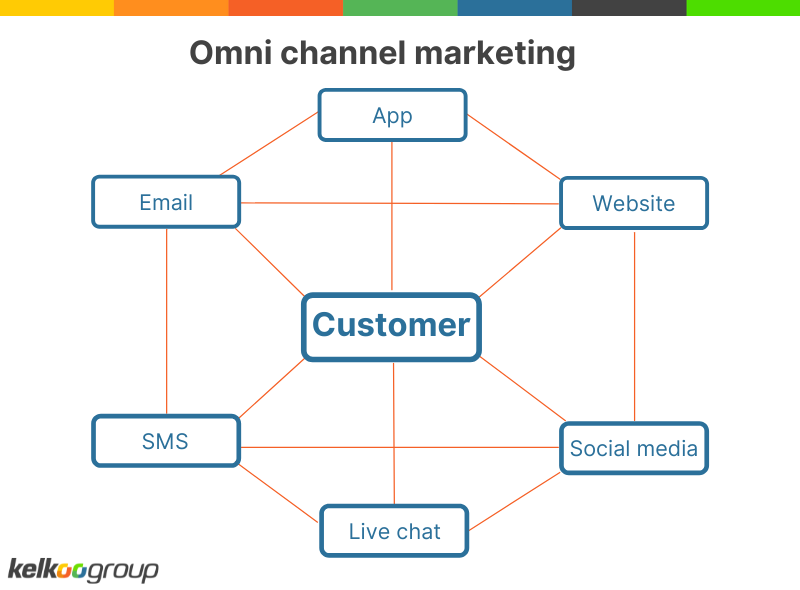
Boost your sales with an omni-channel adaptation
Have you ever wondered how you can make your customer journey more of a quest than a trek? The main aim of omni-channel marketing is to make your solution more integrated, and therefore more accessible to customers by creating a seamless and issue-free pathway from channel to channel. Ultimately, this will maximise the number of conversions you create, and helping your sales to skyrocket too.
What is omni-channel marketing?
The basis of an omni-channel approach places focus on having a harmonious online presence. Omni-channel marketing consists of tailoring your content to be personalised for your channel visitors, whilst maintaining clear and consistent branding across social media, email marketing and your website. Omnichannel marketing poses three main benefits; greater reach, better engagement and a seamless customer experience. 90% of customers expect consistent interactions across channels so the benefits of omni-channel marketing should improve your lead generation, and conversion to sales.
Don’t confuse multi-channel and omni-channel

Multi-channel marketing simply uses a multitude of channels to interact with customers, with the brand at the focal point of the strategy. Although the omni-channel approach also uses multiple channels, these all work in co-ordination with one another, rather as single operations.
A brand with a multi-channel strategy will use each of their channels individually to convey the product, and place the business at the centre of the model rather than the customer.
The omni-channel approach centres around your customer’s needs, and adapts the brand message to each touchpoint they have with you, with a focus on consistency.
Omni-channel customers tend to spend more than single-channel customers, according to a Harvard Business Review study, so it’s a profitable adaptation for your business model.
Top tips for how to implement an omni-channel strategy:
Consistent messaging across your channels should underpin your approach:
Get your digital ducks in a row
In order to implement an omni-channel strategy, it’s essential to establish all of your channels, and figure out who your target audience is for each one. Once you’ve done that you’re able to outline what your objectives are for your communication channels, therefore allowing you to define a plan on how to communicate using these platforms, and how they will work in conjunction with one another.
Create engaging content for your consumers to digest
‘Engaging content’ simply means content that provides something of value to the consumer. Your content should be informative enough that it immediately captivates the reader, and provides them with the relevant information. Lean into the strengths of your business and produce something reflective of your product, and your values. If your product is conveyed well through video, for example, then create video content to be shared, adapting it to be optimal for each platform.
Make consistency a priority
Your brand’s presence should be synonymous across all channels, platforms and devices, and the system you build means they work in coordination with each other. Schedule your content so it’s released at the same time across different channels, and has a consistent look and feel. This gives your brand credibility and improves the online status by creating a consistent brand. 71% of consumers say they’re more likely to purchase from a brand they recognise. A trusting consumer is more likely to be a spending consumer.
Monitor your analytics
When looking at your data, it’s important to take a holistic view on your data, looking at both online and offline data. Create and then measure your KPIs for each channel so you’re able to see how each channel is performing, and then what changes must be made in order to improve these KPIs. This article discusses how to define and track your KPIs. Continually monitoring your KPIs allows your business stays up to date with the ever-changing e-commerce landscape.
How else can I improve my online sales?
At Kelkoo group, we’re here to help you implement a sustainable presence on many Shopping channels such as our proprietary Shopping network, Google’s Shopping Ads, Bing Ads, Facebooks Ads and much more. Moreover, we can help you optimise your feed for each campaign to help you display the right product for the right audience, bearing in mind the overall picture to control consistency and support your omni-channel approach. To get started and expand to more shopping channels, contact us now and our teams of experts will get back to you in no time.
